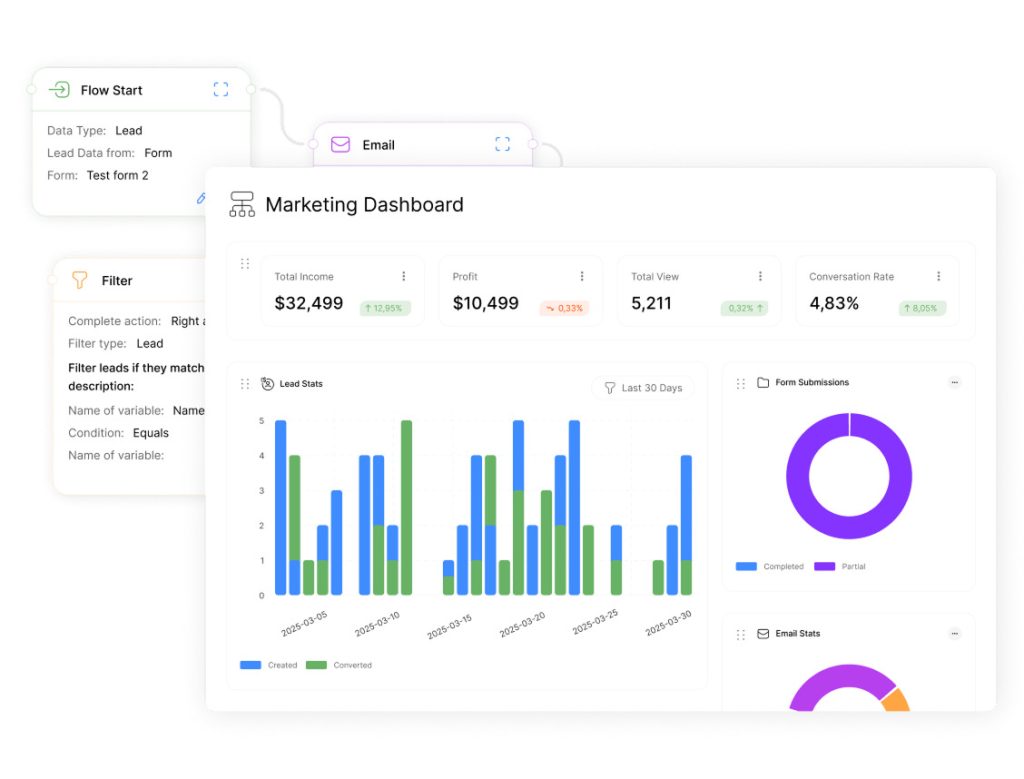Content Categorization And Tagging: Best Practices Guide

Digital assets multiply faster than most teams can manage. Without clear systems, businesses risk drowning in unstructured data. This guide reveals how to turn chaos into order through strategic organization methods.
Categories act like filing cabinets for related materials, creating parent-child relationships for easy browsing. Tags function as instant labels, highlighting specific topics across unrelated groups. Together, they form a navigation backbone that boosts productivity and user satisfaction.
Modern enterprises need systems that deliver instant access to critical information. A well-designed taxonomy cuts search time from minutes to seconds. It transforms cluttered repositories into streamlined hubs where every asset has its place.
Visitors instinctively follow clear pathways to answers. Intuitive structures reduce bounce rates while improving engagement metrics. For decision-makers, this means higher conversion rates and stronger brand credibility.
This framework goes beyond basic folder creation. It explores advanced techniques for scaling systems as companies grow. From permission controls to cross-platform consistency, these methods ensure long-term operational efficiency.
Key Takeaways
- Structured systems convert digital chaos into searchable repositories
- Hierarchical groups enable faster access to critical materials
- Strategic labeling improves site navigation and user experience
- Clear governance prevents duplicate files and wasted effort
- Optimized taxonomies boost SEO rankings and workflow efficiency
Getting Started with Content Organization

Effective digital systems require deliberate structural planning. Teams create navigational clarity by establishing two core elements: categories as structural pillars and tags as connective tissue.
Architecting Information Frameworks
Main groups function like building blueprints. Marketing teams might organize materials by client demographics, while HR departments structure resources by job roles. Hierarchical designs allow infinite scalability – a “Case Studies” group could branch into industry-specific subgroups for precision.
Successful frameworks mirror how teams naturally sort information. Analyzing existing material clusters reveals logical groupings. This approach ensures systems align with both employee workflows and visitor expectations.
Powering Precision Discovery
Labels act as search accelerators across platforms. A cookware retailer might apply “oven-safe” or “non-stick” identifiers to products spanning multiple collections. These markers create invisible pathways between related items.
Standardized label libraries prevent confusion. Maintaining consistent terminology ensures visitors find all relevant materials through website searches. For instance, using “food storage” instead of multiple variations like “containers” or “lunch boxes” streamlines results.
Exploring the Fundamentals of Content Taxonomy
Effective information systems thrive on three core components working in harmony. These elements create layered pathways for organizing materials while enabling precise retrieval across platforms.
Structural Elements Compared
In essence, categories form the backbone of digital organization through nested hierarchies. For instance, a tech blog might structure groups like ‘Programming Languages’ > ‘Python’ > ‘Machine Learning.’ Ultimately, this tree-like arrangement mirrors logical relationships.
Tags operate as flexible connectors between unrelated materials. An e-commerce site could label products with “eco-friendly” or “holiday gift” across electronics and apparel sections. These markers create invisible bridges between items.
Metadata functions behind the scenes, storing technical specifications and creation details. Search engines leverage this hidden data to understand context without affecting interface design.
| Purpose | Structure | Visibility | |
|---|---|---|---|
| Categories | Broad grouping | Hierarchical | User-facing |
| Tags | Cross-linking | Flat | User-facing |
| Metadata | Technical specs | Unstructured | System-only |
Driving Engagement Through Design
“According to recent UX studies, well-structured taxonomies cut search times by 40%. Similarly, visitors instinctively navigate systems that match their mental models. For example, a cooking site using consistent ingredient tags across recipe categories demonstrates this principle.
Multi-path discovery options accommodate different browsing styles. Some users explore broad categories first, while others search specific tags. Systems supporting both methods see 28% longer session durations.
Content Categorization And Tagging

Strategic organization systems unlock dual advantages: enhanced search visibility and frictionless navigation. These interconnected benefits create competitive advantages for businesses prioritizing information accessibility.
Search Visibility Through Structural Clarity
Google’s John Mueller clarifies:
“Tags serve as signposts, not ranking factors – but they guide both visitors and algorithms to valuable materials.”
Well-designed systems boost SEO through:
- Clean URL patterns reflecting logical hierarchies
- Interconnected pages demonstrating topical authority
- Redundant page prevention via smart indexing controls
Platforms like AIOSEO help manage technical settings. Disabling “Show in Search Results” for archive pages prevents duplicate content while preserving navigation paths.
Sustainable System Maintenance
Successful implementations require ongoing refinement. Three essential practices:
- Governance frameworks: Define approval processes for new labels
- Automation tools: Apply consistent tags across platforms
- Performance audits: Track time-on-page metrics per category
Marketing teams using template-driven approaches report 37% faster content updates. Regular reviews identify underused tags needing consolidation or removal.
Leveraging Taxonomy for Enhanced SEO and Navigation
Smart taxonomy design bridges user needs with search algorithm requirements. Proper configuration ensures systems meet both visitor expectations and technical specifications for maximum visibility.
Best Practices for Optimizing Tag and Category Settings
WordPress experts recommend capping categories at 5-10 per site. This maintains thematic focus while allowing depth. For blog posts, combining tags and categories under 15 total prevents search engines from flagging spammy patterns.
Effective tags use natural language variations of target keywords. A recipe site might label dishes with “30-minute meals” instead of generic “quick recipes.” This approach helps visitors easily find related materials through multiple pathways.
Strategies to Prevent Duplicate Content and Improve Site Discoverability
Technical safeguards protect ranking potential. Plugins like AIOSEO let teams disable search engines from indexing archive pages. As Google’s John Mueller notes:
“Consolidating signals through canonical tags directs crawlers to priority pages while preserving navigation benefits.”
Three tactical implementations boost performance:
- Clean URL structures like /blog/category/SEO-tips/
- Internal links connecting related articles across groups
- Monthly audits tracking organic traffic per category
| Setting | Optimal Configuration | Impact |
|---|---|---|
| Category Indexing | Noindex via plugin | Prevents thin content penalties |
| Tag Naming | 2-4 word phrases | Improves click-through rates |
| Hierarchy Depth | 3 sublevels maximum | Reduces crawl budget waste |
These methods create search-friendly architectures. Sites using structured internal linking report 22% higher time-on-page metrics. Regular testing ensures systems adapt to evolving SEO standards while helping users easily find critical resources.
Advanced Strategies and Tools for Content Management

Modern enterprises require dynamic systems that evolve with shifting demands. Leading platforms now offer intelligent automation and collaborative frameworks to handle complex classification needs while maintaining operational agility.
Harnessing Intelligent CMS Features
To begin with, headless systems like Kontent.ai transform taxonomy management through API-driven architecture. In addition, teams automatically apply labels based on predefined rules, ensuring consistency across 10,000+ assets. Notably, one automotive manufacturer reduced manual classification time by 73% using these automated workflows.
First of all, flexible content models adapt to emerging requirements without code changes. Furthermore, marketing teams update audience segments or regional targeting parameters in minutes. As a result, this adaptability proves critical when launching time-sensitive campaigns across multiple platforms.
Strategic Tool Integration Patterns
Effective ecosystems connect classification systems with essential business tools:
| Platform | Integration Benefit | Impact |
|---|---|---|
| CRM Software | Personalizes content delivery | +34% conversion lift |
| Analytics Dashboards | Tracks taxonomy performance | 27% faster optimizations |
| Marketing Automation | Triggers audience-specific workflows | 41% higher engagement |
Building Sustainable Systems
Cross-functional teams ensure taxonomies meet diverse needs. A healthcare provider’s working group – including UX designers and compliance officers – redesigned their material library for 58% faster nurse onboarding.
Quarterly audits identify underused labels and emerging trends. Retailers using this approach maintain 92% taxonomy relevance during seasonal shifts. As Kontent.ai’s documentation states:
“Scalable frameworks treat classification as living systems, not static repositories.”
Proactive planning accommodates new formats like AR experiences and voice search optimization – critical for staying ahead in competitive markets.
Conclusion
Forward-thinking organizations now recognize structured information systems as revenue drivers rather than back-office necessities. These frameworks deliver measurable value through faster team workflows and enhanced visitor engagement that converts casual browsers into loyal customers.
Intelligent taxonomy design creates competitive edge across multiple fronts. Teams locate critical materials 60% faster, while search engines reward clean architectures with higher rankings. Dynamic systems adapt to market shifts through automated label updates and behavior-driven refinements.
Investment in professional taxonomy development yields compounding returns. Businesses report 41% reductions in content management costs alongside improved cross-department collaboration. Scalable structures future-proof operations against emerging formats like voice search and AI-driven interfaces.
The ultimate payoff lies in transforming digital chaos into strategic assets. When every file has intentional placement and multiple discovery paths, organizations unlock new growth opportunities while strengthening market authority in specialized areas.

